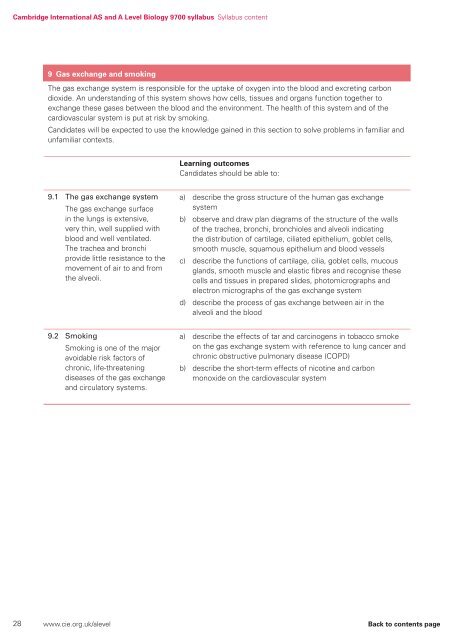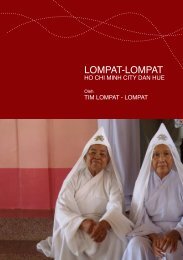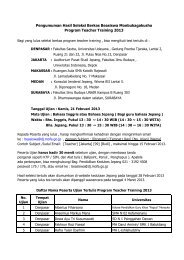9700_y16_sy
9700_y16_sy
9700_y16_sy
You also want an ePaper? Increase the reach of your titles
YUMPU automatically turns print PDFs into web optimized ePapers that Google loves.
Cambridge International AS and A Level Biology <strong>9700</strong> <strong>sy</strong>llabus Syllabus content<br />
9 Gas exchange and smoking<br />
The gas exchange <strong>sy</strong>stem is responsible for the uptake of oxygen into the blood and excreting carbon<br />
dioxide. An understanding of this <strong>sy</strong>stem shows how cells, tissues and organs function together to<br />
exchange these gases between the blood and the environment. The health of this <strong>sy</strong>stem and of the<br />
cardiovascular <strong>sy</strong>stem is put at risk by smoking.<br />
Candidates will be expected to use the knowledge gained in this section to solve problems in familiar and<br />
unfamiliar contexts.<br />
Learning outcomes<br />
Candidates should be able to:<br />
9.1 The gas exchange <strong>sy</strong>stem<br />
The gas exchange surface<br />
in the lungs is extensive,<br />
very thin, well supplied with<br />
blood and well ventilated.<br />
The trachea and bronchi<br />
provide little resistance to the<br />
movement of air to and from<br />
the alveoli.<br />
a) describe the gross structure of the human gas exchange<br />
<strong>sy</strong>stem<br />
b) observe and draw plan diagrams of the structure of the walls<br />
of the trachea, bronchi, bronchioles and alveoli indicating<br />
the distribution of cartilage, ciliated epithelium, goblet cells,<br />
smooth muscle, squamous epithelium and blood vessels<br />
c) describe the functions of cartilage, cilia, goblet cells, mucous<br />
glands, smooth muscle and elastic fibres and recognise these<br />
cells and tissues in prepared slides, photomicrographs and<br />
electron micrographs of the gas exchange <strong>sy</strong>stem<br />
d) describe the process of gas exchange between air in the<br />
alveoli and the blood<br />
9.2 Smoking<br />
Smoking is one of the major<br />
avoidable risk factors of<br />
chronic, life-threatening<br />
diseases of the gas exchange<br />
and circulatory <strong>sy</strong>stems.<br />
a) describe the effects of tar and carcinogens in tobacco smoke<br />
on the gas exchange <strong>sy</strong>stem with reference to lung cancer and<br />
chronic obstructive pulmonary disease (COPD)<br />
b) describe the short-term effects of nicotine and carbon<br />
monoxide on the cardiovascular <strong>sy</strong>stem<br />
28 www.cie.org.uk/alevel Back to contents page





